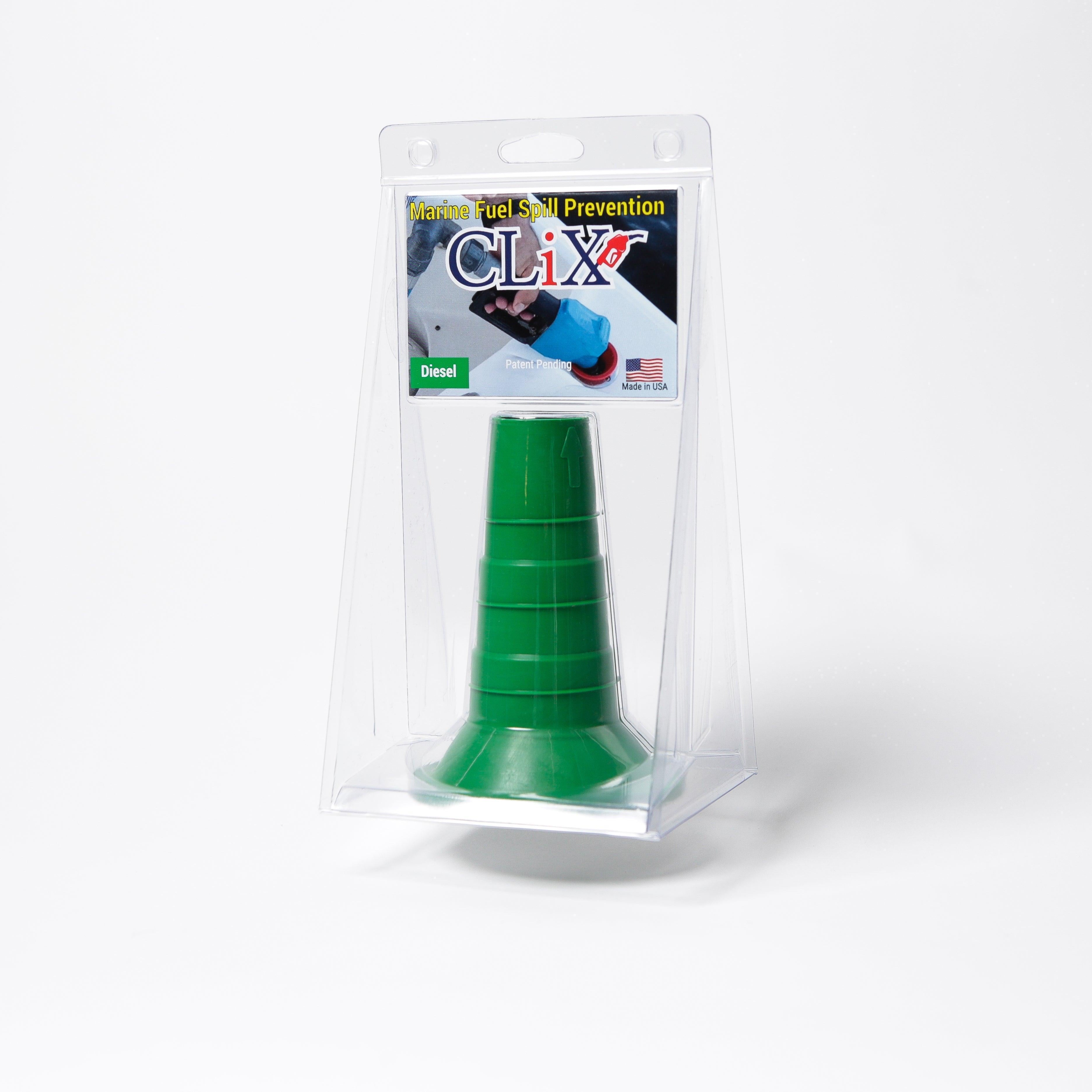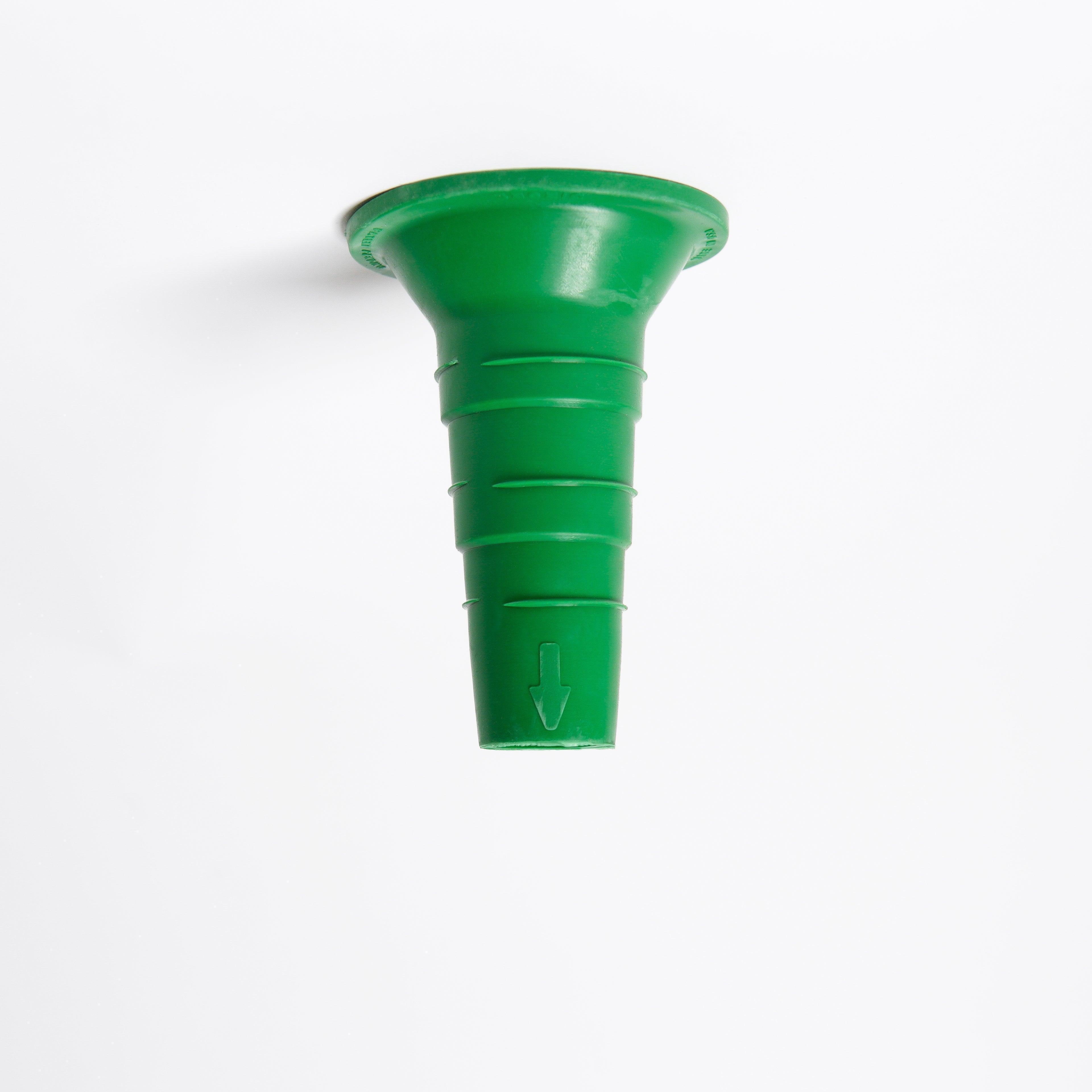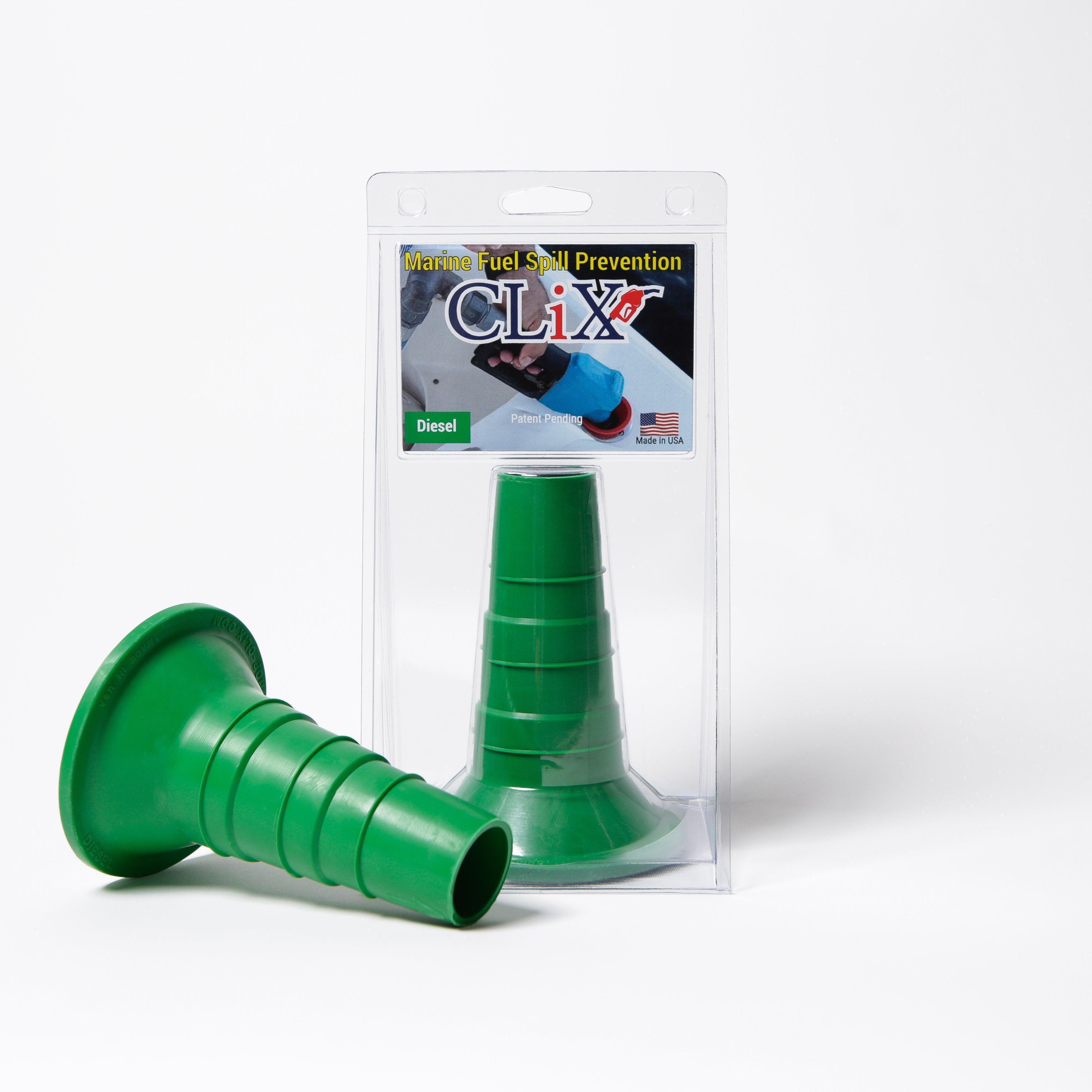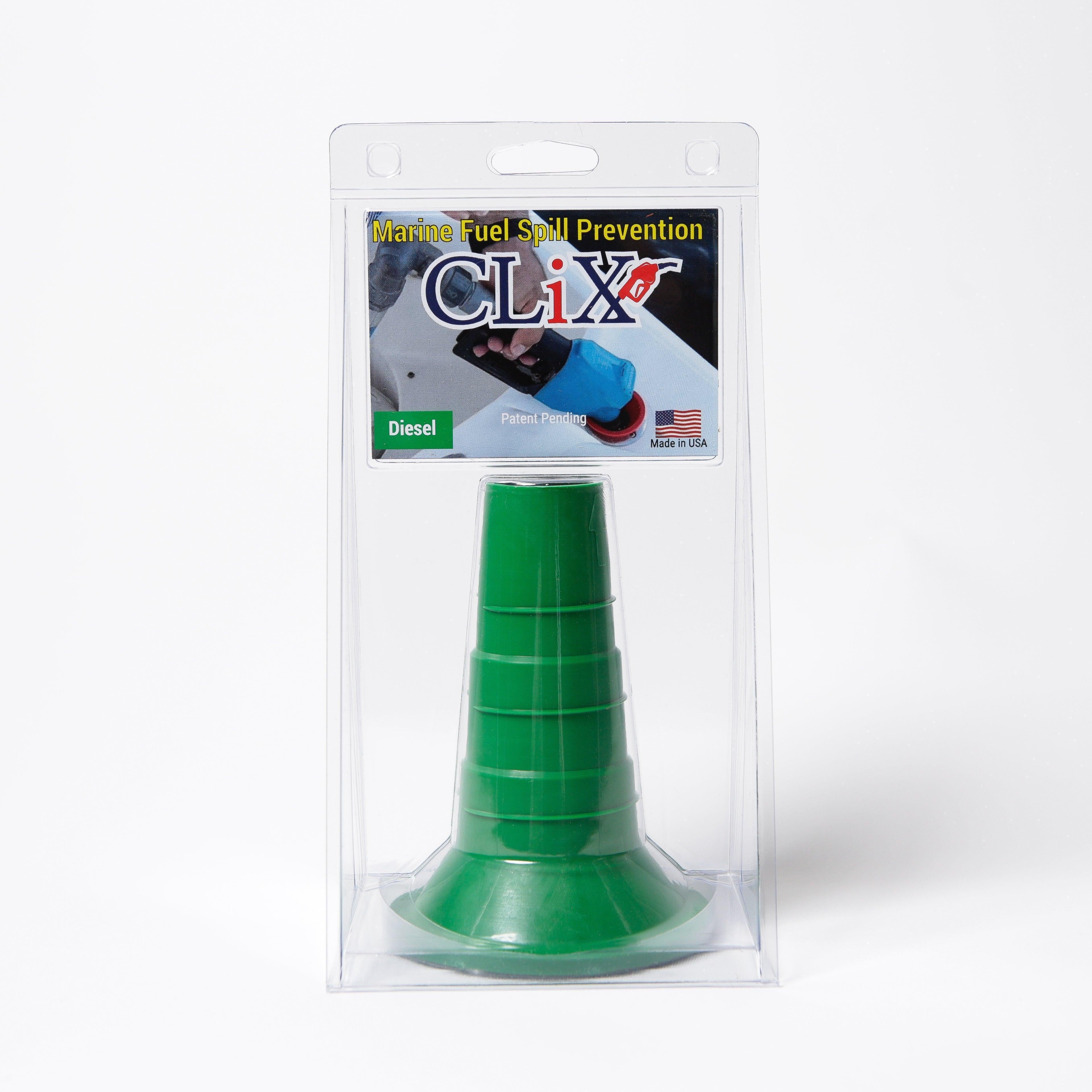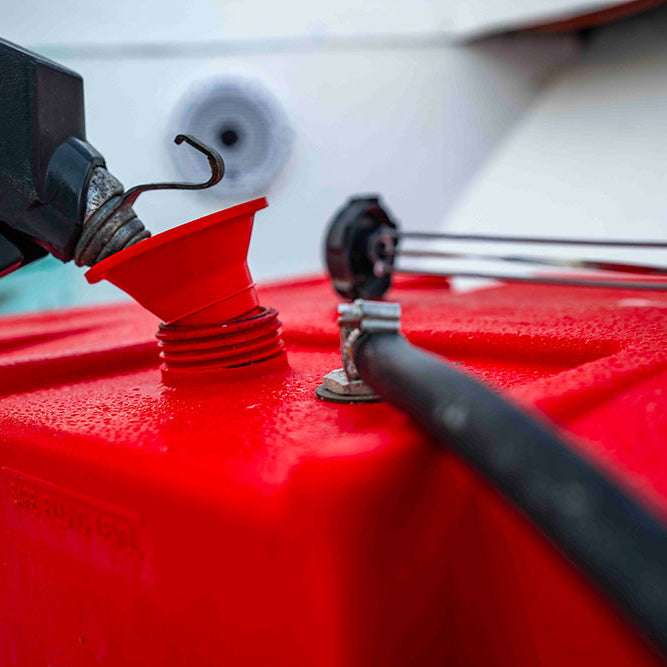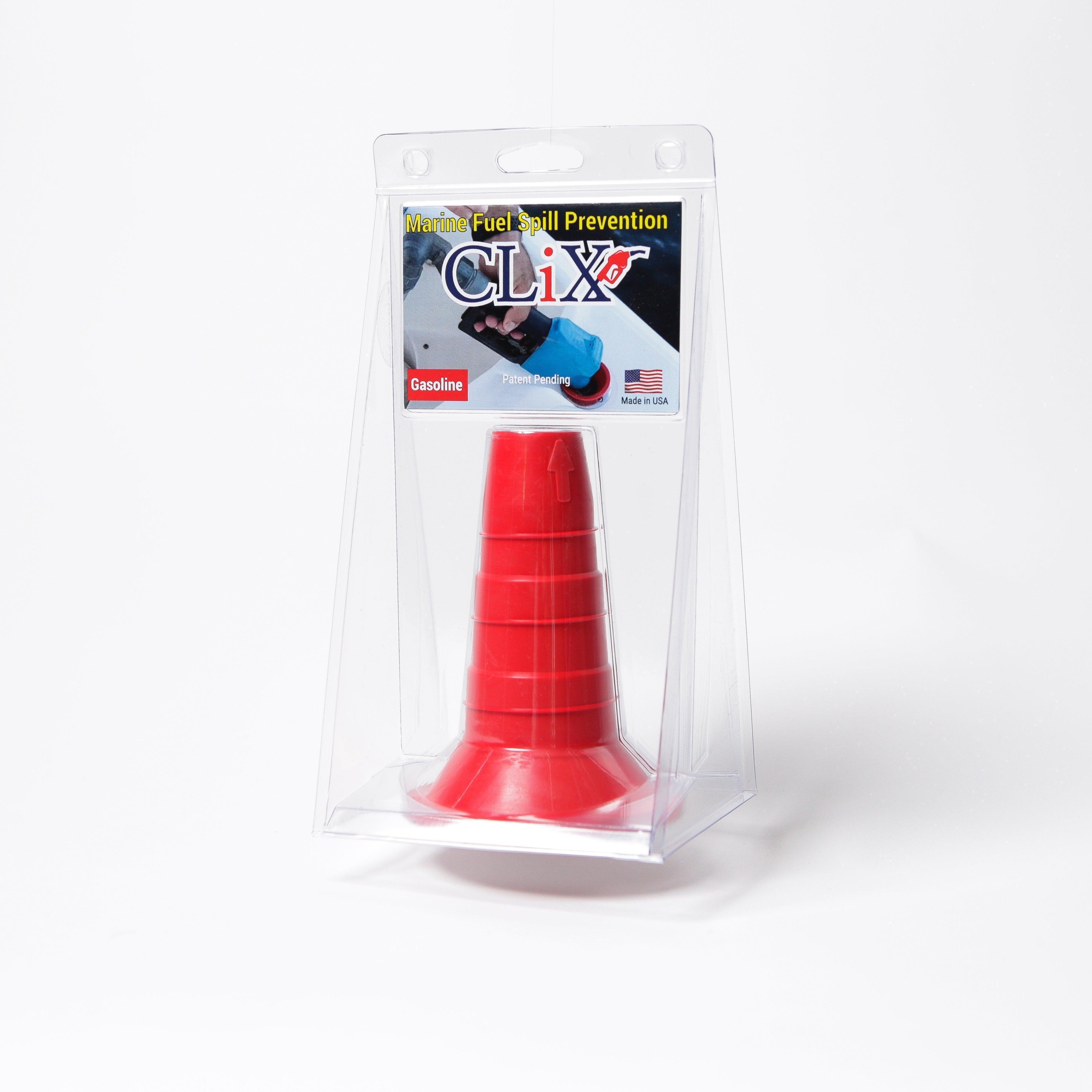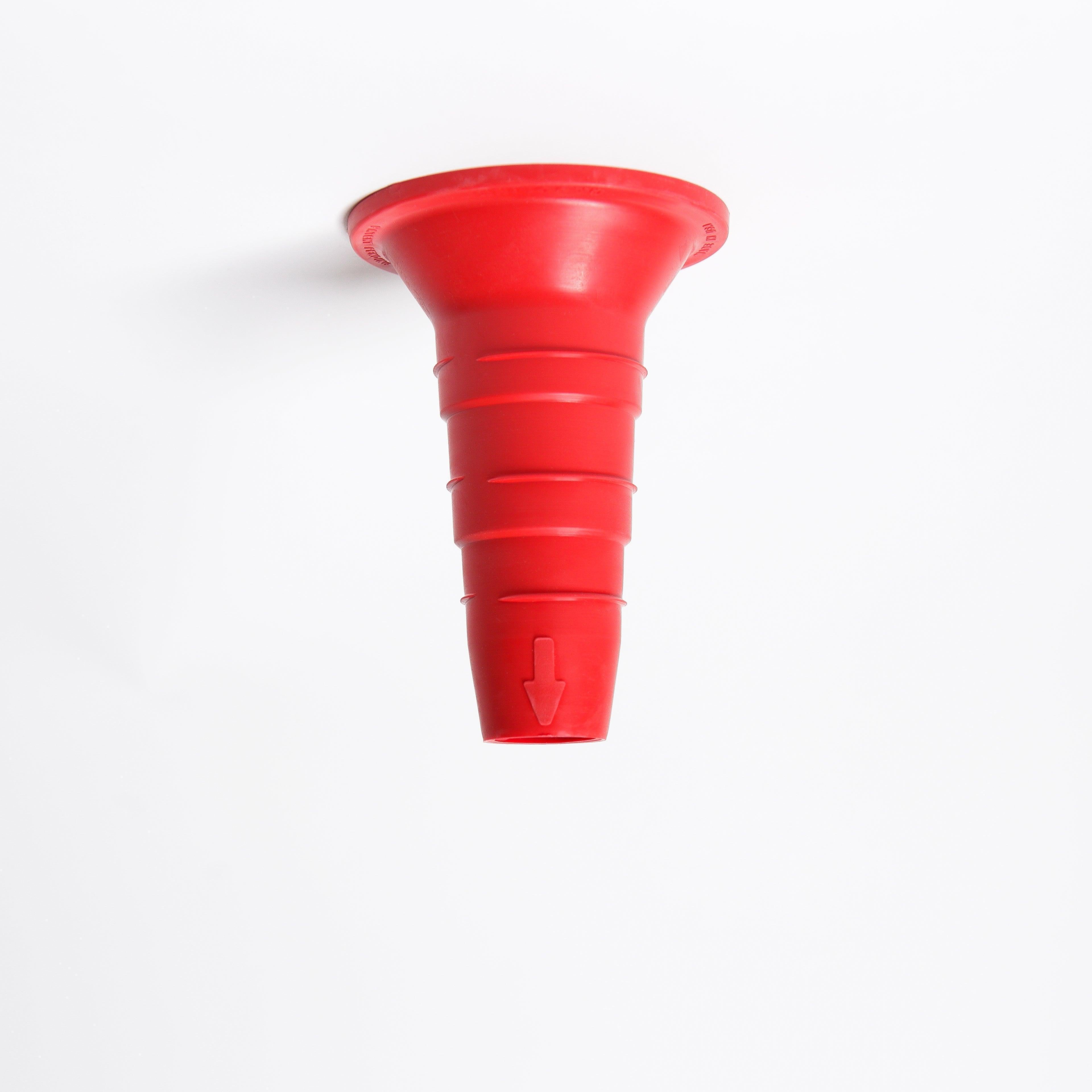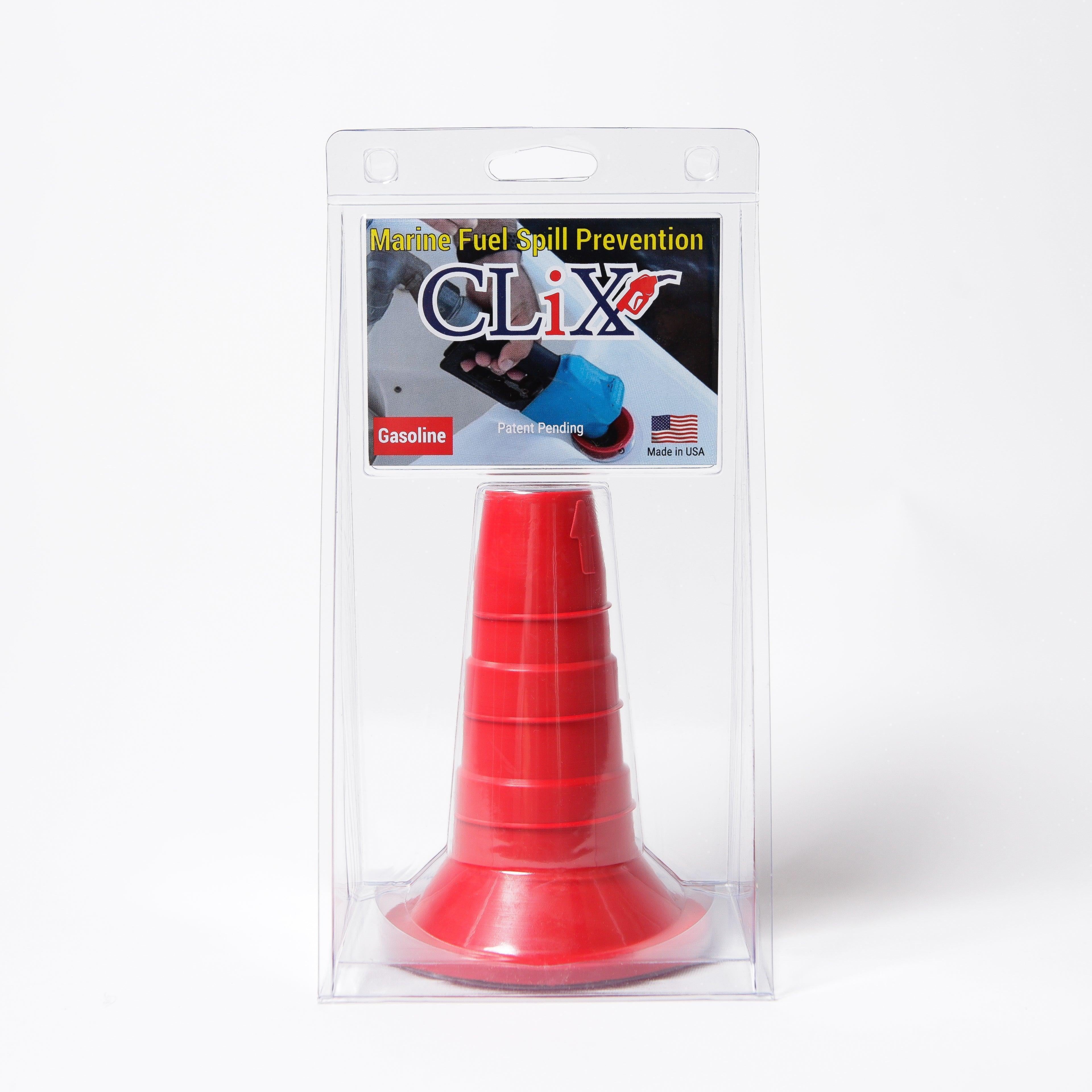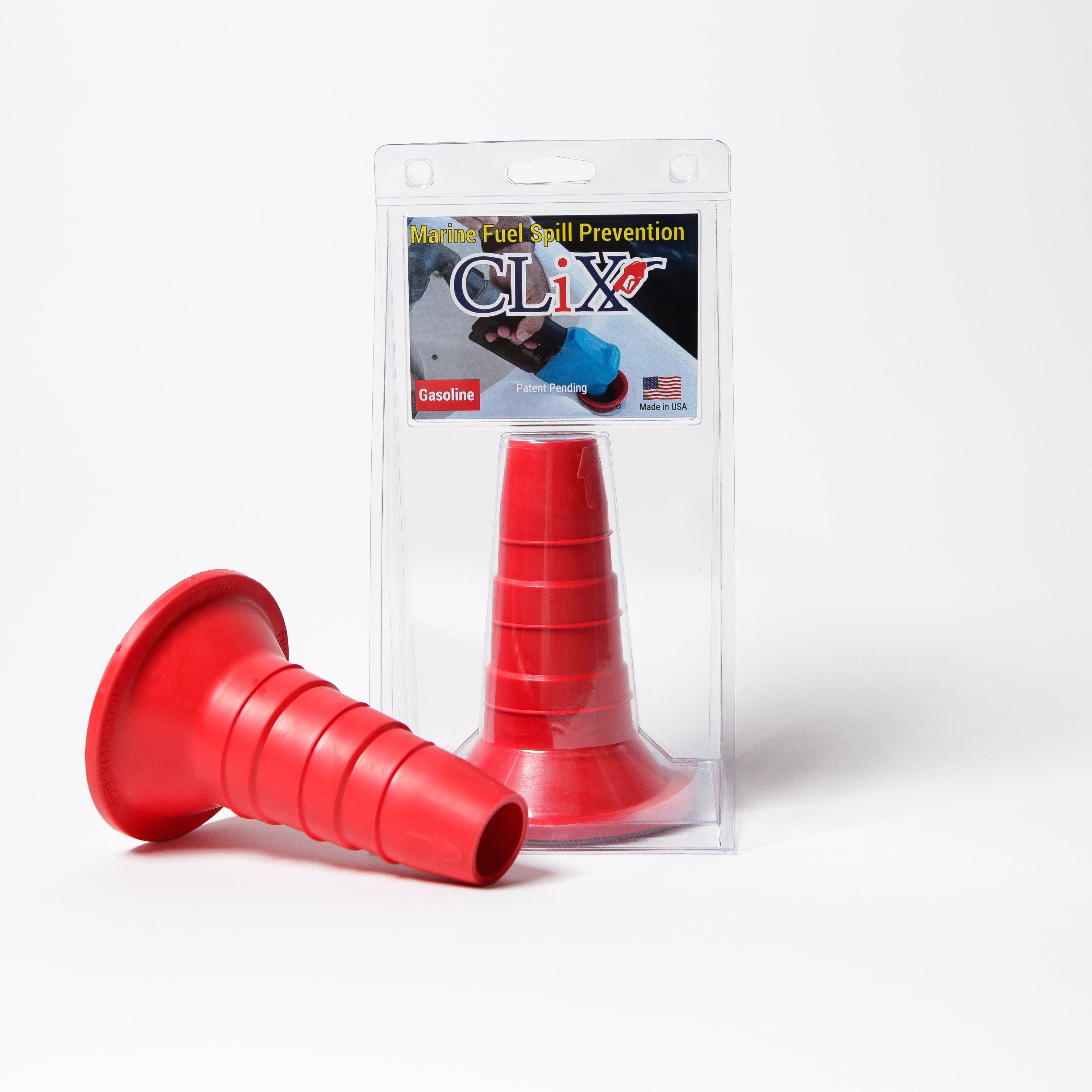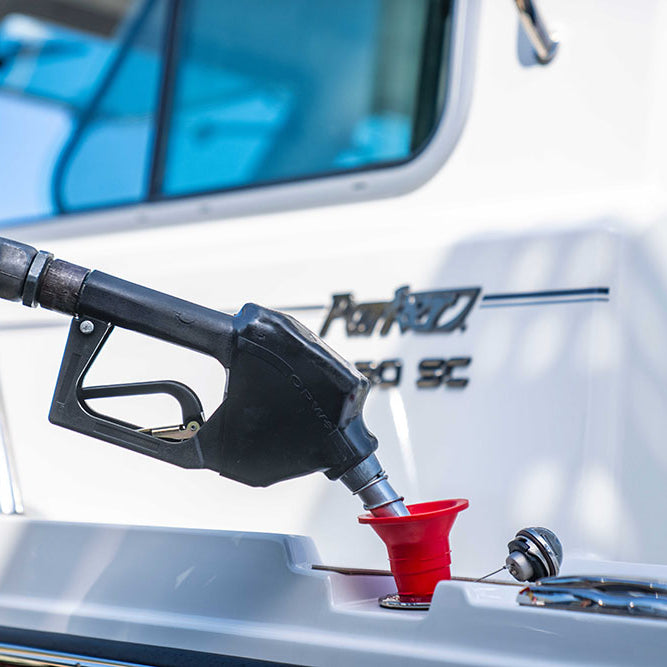Fuel Up Smart: Save Money and the Planet
Boost your boat fuel efficiency and enjoy more time on the water. This listicle reveals seven practical tips to lower fuel costs, extend your engine's life, and lessen your environmental footprint. Whether you're a recreational boater or a professional captain, these strategies will help you get the most out of every drop. Learn how to optimize your hull, master throttle control, manage weight distribution, and more. Improving boat fuel efficiency benefits your wallet and the planet. Let's get started!
1. Maintain Optimal Engine Performance
One of the most effective ways to boost boat fuel efficiency is through diligent engine maintenance. A well-tuned engine burns fuel more completely and operates at peak performance, directly translating to significant fuel savings. This isn't just about saving money at the pump; it's about maximizing your time on the water, reducing your environmental impact, and ensuring the longevity of your valuable engine. This principle applies to all types of boat engines, from small outboards to large inboard diesels, making it relevant to every boater, whether you're a weekend angler or a professional captain.
The mechanics behind this are simple. Internal combustion engines rely on a precise mix of fuel and air for optimal combustion. When components like spark plugs, fuel injectors, and filters are dirty or worn, this delicate balance is disrupted. The engine has to work harder to achieve the same power output, leading to wasted fuel and increased emissions. Similarly, old, degraded oil doesn't lubricate the engine as effectively, creating more friction and further reducing efficiency. Addressing these issues through regular maintenance allows the engine to operate as designed, minimizing fuel consumption.
Regular engine maintenance encompasses several key features:
- Regular oil changes: Changing your engine oil every 100 hours of operation or seasonally (whichever comes first) is crucial. Fresh oil lubricates the engine components, reducing friction and improving efficiency.
- Clean air and fuel filters: These filters prevent contaminants from entering the engine, ensuring optimal airflow and clean fuel delivery.
- Properly gapped spark plugs: Spark plugs ignite the fuel-air mixture. Correctly gapped plugs ensure a strong spark for efficient combustion.
- Clean fuel injectors: Fuel injectors deliver fuel to the cylinders. Clean injectors ensure the proper amount of fuel is delivered at the right time, maximizing combustion efficiency.
- Proper engine timing: Accurate engine timing synchronizes the various engine components, optimizing the combustion process and fuel efficiency.
The benefits of maintaining optimal engine performance are numerous:
Pros:
- Improved fuel efficiency: Studies show that a well-maintained engine can improve fuel efficiency by 20-30%.
- Extended engine life: Regular maintenance significantly prolongs the life of your engine, protecting your investment.
- Reduced emissions: A properly tuned engine burns fuel more completely, resulting in fewer harmful emissions.
- Prevents costly breakdowns: Addressing small issues through regular maintenance can prevent major, expensive repairs down the line.
Cons:
- Requires regular investment in maintenance: Maintaining an engine does involve ongoing costs for parts and services.
- Time-consuming process: Performing some maintenance tasks can be time-consuming, particularly for those unfamiliar with boat engines.
- May need professional service for complex issues: Some maintenance tasks may require the expertise of a qualified marine mechanic.
Real-world examples demonstrate the effectiveness of this approach. Yamaha's maintenance program, for instance, showcases fuel savings of up to 25% on well-maintained outboard engines. Similarly, Mercury Marine's OptiMax engines are known for their superior efficiency when properly maintained. Even large commercial fishing fleets are realizing significant operational cost reductions through proactive preventive maintenance schedules.
The infographic below visually represents the impact of engine maintenance on fuel consumption.

As shown in the bar chart titled 'Engine Maintenance Impact,' neglecting engine maintenance can lead to a 25% increase in fuel consumption, while a properly maintained engine can achieve a 25% reduction. This stark comparison underscores the importance of prioritizing engine upkeep for achieving boat fuel efficiency.
Here are some actionable tips for maintaining optimal engine performance and maximizing boat fuel efficiency:
- Follow the manufacturer's maintenance schedule religiously: Your owner's manual outlines the recommended maintenance intervals for your specific engine. Adhering to this schedule is critical for optimal performance and longevity.
- Use high-quality marine oil and filters: Using marine-specific products ensures proper lubrication and filtration in the harsh marine environment.
- Keep maintenance logs: Tracking your maintenance activities allows you to monitor performance improvements and identify potential issues early on.
- Address small issues before they become major problems: Don't ignore warning signs. Addressing minor issues promptly can prevent them from escalating into costly repairs.
- Consider professional tune-ups at the start of each boating season: A professional tune-up by a qualified marine mechanic can ensure your engine is running at peak efficiency.
By prioritizing engine maintenance, boat owners can significantly improve their fuel efficiency, extend the life of their engines, and contribute to a cleaner marine environment. This proactive approach translates to more time on the water and less money spent at the fuel dock, making it a win-win for both your wallet and the planet.
2. Optimize Hull Condition and Cleanliness
One of the most significant yet often overlooked factors impacting boat fuel efficiency is the condition of your hull. A clean and smooth hull is crucial for minimizing drag, allowing your boat to glide through the water with less resistance. Even a thin layer of slime, let alone barnacles or other marine growth, can create significant friction, forcing your engine to work harder and consume more fuel. This translates directly into higher operating costs and a reduced range. Improving your boat's hull condition is a direct path to increased fuel efficiency and overall performance. This is particularly important for recreational boat owners, professional fleet captains, and anyone concerned about minimizing their environmental impact.

Think of it like this: trying to swim through thick mud requires significantly more effort than swimming through clear water. The same principle applies to your boat moving through water. Hull fouling, the accumulation of marine organisms and debris on the hull, can increase fuel consumption by a staggering 30-40% in severe cases. This makes regular hull cleaning and the application of quality antifouling paint an essential part of maintaining boat fuel efficiency. By reducing drag, you're essentially allowing your engine to work smarter, not harder, resulting in noticeable fuel savings.
Features of an optimized hull maintenance program include regular cleaning and inspection, application of quality antifouling paint, maintaining a smooth hull finish, regular propeller cleaning and inspection, and the removal of any marine growth or barnacles. These steps ensure that your boat is operating at peak efficiency and experiencing minimal drag.
The benefits of maintaining a clean hull extend beyond boat fuel efficiency. A clean hull improves boat speed and overall performance, allowing you to reach your destination faster and enjoy a smoother ride. Furthermore, it extends the lifespan of both the hull and propeller by preventing corrosion and damage caused by marine growth. This, in turn, helps maintain the value of your boat, making it a smart investment in the long run. For example, U.S. Navy studies have documented fuel savings of up to 40% on vessels with clean hulls. The commercial shipping industry uses sophisticated hull performance monitoring systems to track efficiency and schedule cleanings, demonstrating the importance of this practice at a large scale. Even recreational boaters can achieve significant gains, with some reporting 25% better mileage after a professional hull cleaning.
While the benefits are clear, there are some drawbacks to consider. Maintaining a clean hull requires regular haul-outs for thorough cleaning, which can be time-consuming and inconvenient. Antifouling paint can be expensive, and environmental regulations restrict the use of some products, requiring careful selection. The entire process can be time-intensive, requiring dedication and planning. However, the substantial fuel savings and improved performance far outweigh these costs in the long run, making it a worthwhile investment for any boat owner.
Here are some actionable tips to improve your boat fuel efficiency through hull maintenance:
- Clean your hull monthly during the boating season: This helps prevent the build-up of slime and other fouling organisms.
- Use biodegradable hull cleaners: Minimize your environmental impact by choosing eco-friendly cleaning products.
- Apply antifouling paint according to manufacturer specifications: Ensure proper application for maximum effectiveness and longevity.
- Inspect and clean your propeller regularly: A fouled propeller can also significantly impact fuel efficiency.
- Consider hull monitoring systems for frequent users: These systems provide real-time data on hull performance and can help optimize cleaning schedules.
From Interlux Paint and Pettit Paint to Sea Hawk Paints and professional marine surveyors, the importance of hull cleanliness for fuel efficiency is widely recognized throughout the marine industry. Even commercial shipping efficiency experts emphasize the role of a clean hull in maximizing fuel economy.
Learn more about Optimize Hull Condition and Cleanliness While this link discusses fuel tank cleaning, it highlights the overall importance of maintenance for optimal boat performance, which is directly related to hull cleanliness and fuel efficiency. By taking proactive steps to maintain a clean and smooth hull, you can significantly improve your boat fuel efficiency, save money, enhance performance, and minimize your environmental footprint.
3. Master Proper Throttle Management
One of the most impactful ways to boost your boat's fuel efficiency is through proper throttle management. This involves operating your engine at the optimal RPM range for fuel economy, which often differs significantly from the RPM for maximum speed. Contrary to popular belief, running your engine at full throttle rarely delivers the best mileage. Instead, most boats achieve peak fuel efficiency at 75-85% of their wide-open throttle, a "sweet spot" where the engine burns fuel most efficiently for the power output. By understanding this principle and adopting consistent speed practices, you can significantly reduce your fuel consumption and operating costs. This translates to more time on the water and less time at the fuel dock, a benefit every boater can appreciate.

This approach hinges on understanding your boat's specific performance characteristics. Every vessel, engine, and hull design has a unique optimal operating range. Identifying this range is crucial. This often involves consulting your engine manufacturer's specifications or using onboard engine monitoring systems to track fuel flow at different RPMs. Once identified, maintaining a consistent speed within this optimal RPM range is key to realizing fuel savings. Avoid the temptation to constantly adjust the throttle, as frequent acceleration and deceleration waste fuel.
Implementing proper throttle management techniques provides numerous advantages. The most obvious is a significant improvement in fuel efficiency, often in the range of 20-35%. Think about it: a 30% fuel saving on a 200-gallon fuel tank means 60 fewer gallons needed for the same trip. This translates directly into cost savings and reduced environmental impact. Furthermore, operating your engine at its sweet spot reduces engine wear and tear, leading to lower maintenance costs and a longer engine lifespan. As a bonus, maintaining a consistent speed generally results in a smoother, more comfortable ride.
Real-world examples demonstrate the efficacy of this practice. Sportfishing boats, known for their fuel consumption, can achieve significant improvements, sometimes seeing their fuel economy double when cruising at optimal RPM compared to full throttle. For example, a boat achieving 1.2 mpg at full throttle might achieve 2.5 mpg at a more efficient cruise. Coast Guard vessels have reported fuel savings of up to 30% by implementing throttle management strategies. Even commercial charter boat operators have extended their range by as much as 40% through proper throttle control, allowing them to explore further destinations or reduce refueling frequency.
While throttle management offers compelling benefits, it also presents some challenges. Maintaining optimal speeds might result in slightly longer travel times, requiring patience and discipline. Furthermore, this approach might not be practical in all sea conditions. Rough seas or emergency situations may necessitate deviations from the ideal throttle setting. Finally, there is an initial learning curve involved in finding your boat’s sweet spot and adapting to a more controlled throttle approach.
Here are some actionable tips to master proper throttle management:
- Use Engine Monitoring Systems: Modern marine electronics from manufacturers like Garmin and Lowrance offer fuel flow monitoring systems that can help pinpoint your engine's optimal RPM range.
- Maintain Steady Speeds: Resist the urge to constantly adjust your throttle. Find a comfortable cruising speed within your optimal RPM range and stick to it as much as sea conditions allow.
- Plan Your Routes: Minimize stops and starts by planning efficient routes. This reduces the fuel wasted during acceleration.
- Practice Gradual Acceleration: Avoid abruptly accelerating from idle. Gradually increase throttle to your desired RPM range.
- Monitor Fuel Flow Rates: Track your fuel consumption at different throttle settings to understand the relationship between RPM and fuel efficiency. This hands-on approach helps solidify your understanding of your boat’s specific sweet spot.
Throttle management is a proven technique endorsed by diverse stakeholders in the marine industry, from professional boat captains and fuel efficiency consultants to marine engine manufacturers. By embracing this strategy, boat owners can significantly reduce their fuel costs, extend their engine life, and contribute to a more sustainable boating experience.
4. Optimize Weight Distribution and Load Management
Optimizing weight distribution and load management is a crucial factor in maximizing boat fuel efficiency. Every pound onboard adds to the resistance your boat faces as it moves through the water. This increased resistance translates directly to increased fuel consumption. By understanding how weight affects your boat's performance and implementing smart loading strategies, you can significantly improve your fuel economy and overall boating experience. This is why weight optimization deserves a prominent place on any list concerning boat fuel efficiency.
The principle behind weight optimization is simple: less weight equals less resistance, which equals less fuel burned. But it's not just about reducing the total weight; it's also about how that weight is distributed. An unevenly loaded boat can sit lower in the water, increasing drag and hindering performance. Proper weight distribution aims to keep the boat at its designed waterline and trim, minimizing drag and maximizing planing efficiency for powerboats. For sailboats, proper weight distribution affects stability, sail trim, and overall performance.
This optimization process involves several key features: strategic gear placement, weight reduction strategies, proper passenger positioning, ballast management, and center of gravity optimization. Let’s explore these in more detail.
-
Strategic Gear Placement: Storing heavier items low in the boat and as close to the centerline as possible lowers the center of gravity, improving stability and reducing rocking. Distributing weight evenly from bow to stern (fore and aft) prevents the boat from trimming excessively in either direction, which can create unnecessary drag.
-
Weight Reduction Strategies: This involves removing any unnecessary equipment, supplies, and gear. Ask yourself: Do you really need all those fenders? That extra anchor chain? Those old fishing magazines? Every item adds up. Consider replacing heavier gear with lightweight alternatives whenever possible. For example, swapping out a heavy metal anchor for a modern, lighter-weight anchor can make a noticeable difference.
-
Proper Passenger Positioning: Passengers can contribute significantly to the overall weight, especially on smaller boats. Encourage passengers to distribute themselves evenly and avoid concentrating weight in one area.
-
Ballast Management: For sailboats, ballast is essential for stability, but it's also a significant source of weight. Understanding how to effectively manage ballast – how much to use and where to position it – is key to optimizing performance and fuel efficiency in sailboats. Some powerboats also utilize ballast systems, especially in rough water conditions, and careful management is equally important for these vessels.
-
Center of Gravity Optimization: All the above factors contribute to optimizing the center of gravity. A low and centered center of gravity leads to increased stability, improved handling, and reduced fuel consumption.
The benefits of optimizing weight distribution and load management are numerous: improvements in fuel efficiency by 10-20%, enhanced boat handling and stability, reduced engine strain and wear, and even improved safety through better balance. However, there are a few considerations: it may limit carrying capacity, requires careful planning and organization, and you might need to leave some desired items behind. It also necessitates regular weight assessment to ensure optimal distribution is maintained.
Examples of successful implementation are readily available: racing sailboats achieving significant speed gains through meticulous weight optimization, commercial fishing vessels improving efficiency through strategic load placement, and recreational boats gaining 15% better mileage after removing excess equipment and distributing the remaining weight effectively.
Actionable Tips for Optimizing Weight Distribution:
- Remove unnecessary equipment and supplies: Conduct a thorough inventory and remove anything not essential for your trip.
- Distribute weight evenly fore and aft: Avoid overloading the bow or stern.
- Keep heavy items low and centered: Store heavier items as close to the centerline and as low in the boat as possible.
- Regularly assess and reorganize storage: Periodically review your storage and redistribute items as needed.
- Use lightweight alternatives for gear when possible: Consider lightweight anchors, ropes, and other equipment.
By implementing these strategies, boat owners and operators can significantly improve their boat fuel efficiency, saving money and reducing their environmental impact. For more detailed information on optimizing fuel management for your boat, Learn more about Optimize Weight Distribution and Load Management. From professional racing teams and marine surveyors to boat design engineers and commercial vessel operators, weight optimization is recognized as a cornerstone of efficient boating. This approach benefits everyone from recreational boat owners and anglers to sailors, professional fleet captains, marina operators, and environmental advocates.
5. Utilize Advanced Trim and Tab Systems
One of the most effective ways to boost boat fuel efficiency is by mastering the use of trim and tab systems. These systems work in concert to optimize the boat's running attitude, minimizing drag and maximizing fuel economy. By understanding how to properly use both engine trim and trim tabs, you can significantly reduce fuel consumption – often by 15-25% – while simultaneously improving handling and ride comfort. This makes optimizing your trim and tabs a critical component of fuel-efficient boating, whether you're a recreational boater looking to save money or a professional captain focused on operational costs.
Engine trim refers to the angle of the outboard or sterndrive engine relative to the transom. Adjusting the trim changes the angle of thrust, impacting how the hull interacts with the water. Trim tabs, small adjustable plates mounted on the transom, provide further control by influencing the boat's running angle. Together, these systems allow you to fine-tune the boat's attitude for optimal performance in a wide range of conditions.
How Trim and Tabs Improve Boat Fuel Efficiency:
The primary principle behind trim and tab optimization for fuel efficiency is drag reduction. When a boat is properly trimmed, the hull sits in the water with minimal wetted surface area, reducing frictional drag. Proper trim also helps to minimize bow rise, especially during acceleration, further decreasing drag and improving efficiency. Trim tabs play a crucial role in leveling the boat, particularly in uneven load conditions or when dealing with crosswinds or currents. By leveling the boat, trim tabs minimize the amount of hull surface area in contact with the water, again reducing drag and contributing to better fuel economy.
Examples of Successful Implementation:
Numerous examples demonstrate the effectiveness of trim and tab systems for fuel efficiency. Center console boats, often used for fishing or recreational cruising, frequently utilize Bennett trim tabs to achieve optimal performance and fuel economy. Similarly, sport fishing boats equipped with Lenco trim systems are known to experience significant fuel savings. Even large commercial vessels employ automated trim systems, like those from Humphree, to consistently maintain efficient hull attitudes and reduce operational costs.
Actionable Tips for Optimizing Trim and Tabs:
- Start Neutral: Begin with your engine trim and trim tabs in a neutral position.
- Gradual Adjustments: Make small, incremental adjustments to the trim and tabs, observing the boat's response and monitoring fuel flow.
- Level Running Attitude: Use the trim tabs to achieve a level running attitude, minimizing list and ensuring the boat is not leaning to one side.
- Monitor Fuel Flow: Observe your boat's fuel flow meter while adjusting trim and tabs. The optimal trim setting will correspond with the lowest fuel consumption rate.
- Sea Condition Adaptation: Learn to read water conditions and adjust your trim and tabs accordingly. Rougher seas may require different trim settings than calm water.
- Automated Trim Systems: Consider investing in automated trim systems for consistent optimization, especially for larger vessels or frequent boaters.
Pros and Cons of Using Trim and Tab Systems:
Pros:
- Significant Fuel Efficiency Gains: Properly utilized, trim and tab systems can improve fuel efficiency by 15-25%.
- Enhanced Ride Quality and Comfort: A properly trimmed boat provides a smoother, more comfortable ride.
- Improved Boat Handling: Trim tabs enhance boat control and maneuverability in various conditions.
- Reduced Bow Rise: Proper trim minimizes bow rise during acceleration, improving visibility and efficiency.
Cons:
- Learning Curve: Effective use requires understanding of trim principles and the interplay between engine trim and trim tabs.
- Initial Investment: Quality trim tab systems require an upfront investment.
- Frequent Adjustments: Changing conditions may necessitate frequent trim and tab adjustments.
- Risk of Over-Trimming: Over-trimming can actually reduce efficiency and negatively impact handling.
Utilizing advanced trim and tab systems isn't just a good idea; it's an essential practice for any boater serious about fuel efficiency. By understanding the principles of trim optimization and applying these practical tips, you can significantly reduce your fuel consumption, enhance your boat's performance, and enjoy a more comfortable ride. Whether you're a recreational boater, a professional captain, or anyone in between, mastering the art of trim and tabs is a crucial step towards more efficient and enjoyable boating.
6. Choose the Right Propeller
One of the most impactful yet often overlooked aspects of boat fuel efficiency is propeller selection. Your propeller is the final link between your engine's power and the water, directly influencing how efficiently that power translates into forward motion. Choosing the right propeller can significantly enhance your boat's fuel economy, sometimes by as much as 20-30%, while the wrong one can feel like you're pouring money straight into the sea. This makes propeller selection critical for anyone looking to maximize boat fuel efficiency.
The principle behind propeller efficiency is fairly straightforward. The propeller converts the rotational energy of the engine into thrust by pushing water backward. The size and shape of the propeller blades determine how effectively this energy transfer occurs. Just like gears on a bicycle, different propellers are optimized for different speeds and loads. A propeller that’s too small will over-rev the engine without generating sufficient thrust, wasting fuel. Conversely, a propeller that’s too large will overload the engine, similarly impacting fuel economy and potentially causing damage. Finding the "Goldilocks" propeller – one that's just right – allows the engine to operate within its optimal RPM range while providing maximum thrust efficiency, leading to significant savings on fuel.
Several key factors influence propeller performance and fuel efficiency:
- Pitch: This refers to the theoretical distance a propeller would advance in one revolution. A higher pitch is like a higher gear on a bike – good for higher speeds but requires more power. A lower pitch is better for acceleration and pulling heavy loads but will limit top speed.
- Diameter: The overall size of the propeller affects its ability to grip the water. Choosing the right diameter is essential for ensuring efficient thrust generation without excessive drag.
- Blade Count: More blades generally provide better acceleration and low-speed performance, potentially improving fuel efficiency at cruising speeds, particularly for heavier boats. However, they can also create more drag at higher speeds. Four-blade propellers are often a good choice for enhancing fuel economy.
- Material: Aluminum propellers are more common and affordable, but stainless steel propellers offer greater durability and resistance to corrosion, especially in saltwater environments. While stainless steel represents a higher initial investment, their longevity can offset this cost over time.
- Cupping and Rake: These are more advanced design features that affect water flow over the blades. Cupping can improve grip and reduce ventilation (air being drawn down to the blades), while rake refers to the angle of the blades and can influence performance at different speeds.
Numerous examples demonstrate the impact of propeller selection on fuel efficiency. Mercury Marine’s Enertia propellers, for instance, are specifically designed for enhanced fuel economy and have shown improvements of up to 10% in certain applications. Similarly, Yamaha’s SDS (Shift Dampener System) propellers are optimized for smooth shifting and reduced vibration, contributing to better fuel efficiency. In the commercial sector, fishing boats often utilize custom-designed propellers tailored to their specific operating conditions and load requirements, maximizing fuel efficiency and range.
Tips for Choosing the Right Propeller:
- Consult with a Propeller Specialist: These experts can analyze your boat, engine, and usage patterns to recommend the most suitable propeller.
- Test Different Propellers: The optimal propeller can vary depending on factors like boat load and water conditions. Testing different propellers allows you to fine-tune performance and fuel efficiency.
- Monitor Engine RPM: Ensure your engine reaches the manufacturer's recommended RPM range at wide-open throttle. This indicates that the propeller is properly matched to the engine.
- Consider a Four-Blade Prop: Four-blade propellers often provide better fuel economy, particularly for heavier boats or those frequently operating at cruising speeds.
- Maintain Your Propeller: Regularly inspect your propeller for damage, such as nicks, dents, or bent blades. Damaged propellers reduce efficiency and should be repaired or replaced promptly.
Choosing the right propeller is not merely a performance upgrade; it's a crucial element of responsible boating. By optimizing your propeller, you can reduce fuel consumption, lower operating costs, and minimize your environmental impact. Whether you're a recreational boater, a professional captain, or simply someone who cares about maximizing boat fuel efficiency, investing time and effort in selecting the right propeller is a decision that will pay dividends in the long run.
7. Plan Efficient Routes and Timing
One of the most impactful ways to boost boat fuel efficiency is through strategic route planning and timing. This involves more than simply plotting a straight line from point A to point B. It requires considering a range of factors, including weather conditions, tidal currents, and wind patterns, to minimize travel distance and maximize fuel economy. By carefully planning your routes and choosing optimal departure times, you can significantly reduce fuel consumption, sometimes by as much as 15-25%, while also enhancing safety and potentially even shortening your overall trip duration. This approach is relevant for everyone from recreational boaters enjoying a weekend outing to commercial vessels undertaking long voyages.
The core principle behind efficient route planning is minimizing resistance. Just as a headwind can slow you down on a bicycle, adverse currents and rough seas force your boat to work harder, consuming more fuel in the process. Conversely, favorable currents and calm waters can act like a tailwind, propelling your vessel forward with less effort. By understanding and leveraging these natural forces, you can drastically improve your boat's fuel efficiency.
Implementing efficient route planning requires access to accurate and up-to-date information. Advanced marine navigation systems equipped with features like weather forecasting, tide charts, and current overlays are essential tools. These systems allow you to visualize potential routes, analyze predicted conditions along those routes, and choose the most fuel-efficient option. Features like shortest distance route calculation and fuel consumption tracking further empower you to optimize your journeys. For instance, you can compare the fuel consumption estimates for different routes, factoring in predicted wind and current data, before even leaving the dock.
Numerous examples illustrate the success of this approach. Commercial shipping companies routinely use sophisticated weather routing services to optimize their fleets' routes, saving significant amounts of fuel and reducing emissions. Recreational boaters can achieve similar benefits by consulting tide charts to plan trips that coincide with favorable currents. Long-distance cruisers, in particular, have demonstrated impressive fuel savings through meticulous route optimization, often covering vast distances using surprisingly little fuel.
Want to start optimizing your own boating trips? Here are some actionable tips:
- Utilize marine weather services: Before every trip, consult reliable marine weather forecasts to assess potential conditions. Look for information on wind speed and direction, wave height, and any anticipated storms.
- Plan around tides: If navigating in tidal waters, use tide charts to plan your departure and arrival times to take advantage of favorable currents. Going against the tide can dramatically increase fuel consumption.
- Avoid rough weather: Whenever possible, avoid boating in rough seas or strong winds. These conditions significantly increase fuel consumption and can also compromise safety.
- Invest in a GPS chartplotter with fuel management features: A modern GPS chartplotter can be a powerful tool for route planning and fuel efficiency. Look for models that offer fuel consumption tracking, route optimization algorithms, and integration with weather and tide data.
- Keep detailed logs: Tracking your fuel consumption, routes, and prevailing conditions can help you identify patterns and refine your planning over time. This information can be invaluable for future trips.
While the benefits of efficient route planning are clear, it's important to acknowledge the potential drawbacks:
- Investment in navigation equipment: Advanced marine navigation systems can be expensive, representing a significant upfront investment.
- Unpredictable weather: Weather conditions can change unexpectedly, rendering even the most carefully laid plans obsolete.
- Limited spontaneity: Meticulous planning can sometimes limit spontaneous boating activities.
- Local knowledge: Effective route planning requires a certain degree of knowledge about local conditions, including prevailing currents, typical weather patterns, and potential hazards.
Learn more about Plan Efficient Routes and Timing This resource can provide valuable insights into calculating and monitoring your boat's fuel consumption, further enhancing your ability to plan efficient routes.
By understanding the principles of efficient route planning and investing in the right tools and knowledge, boaters of all types can significantly improve their fuel efficiency. This translates to lower operating costs, reduced environmental impact, and a more enjoyable boating experience overall. From Garmin marine navigation and Raymarine electronics to professional weather routing services, the resources are available to make fuel-efficient boating a reality. Whether you are a recreational boater, professional captain, marina operator, environmental advocate, or simply a boating enthusiast, prioritizing efficient route planning is a smart strategy for maximizing your time on the water while minimizing your impact on the environment and your wallet.
7 Strategies Fuel Efficiency Comparison
| Strategy | Implementation Complexity 🔄 | Resource Requirements ⚡ | Expected Outcomes 📊 | Ideal Use Cases 💡 | Key Advantages ⭐ |
|---|---|---|---|---|---|
| Maintain Optimal Engine Performance | Medium - requires regular maintenance, occasional professional service | Moderate - quality oil, filters, professional tune-ups | High - 20-30% fuel efficiency improvement | Boats used frequently, commercial fleets | Extends engine life, reduces emissions, prevents costly breakdowns |
| Optimize Hull Condition and Cleanliness | High - regular haul-outs, antifouling paint application | High - haul-out costs, antifouling materials | Very High - 30-40% reduction in fuel use | Boats in fouling-prone waters, commercial vessels | Reduces drag significantly, extends hull life, maintains boat value |
| Master Proper Throttle Management | Low - requires operator discipline, learning curve | Low - mostly behavioral adjustments | High - 20-35% fuel savings | All boat types, especially where consistent speed is possible | Reduces engine wear, smoother ride, extends engine life |
| Optimize Weight Distribution and Load Management | Low to Medium - requires planning and assessment | Low - mainly organization and removal of extra gear | Medium - 10-20% efficiency gain | Racing boats, commercial boats with heavy loads | Improves handling, safety, and reduces engine strain |
| Utilize Advanced Trim and Tab Systems | Medium - need understanding of trim, possible equipment purchase | Moderate - cost of trim tabs and possible automation | Medium to High - 15-25% fuel savings | Center console, sport fishing, vessels in varying sea conditions | Enhances ride comfort, improves handling, reduces bow rise |
| Choose the Right Propeller | Medium - requires expertise, testing different props | Moderate to High - cost of propellers, consults | High - 20-30% fuel efficiency improvement | All boats, especially those with variable loads or speeds | Optimizes engine RPM, improves acceleration and top speed |
| Plan Efficient Routes and Timing | Medium - requires navigation knowledge, equipment | Moderate - investment in navigation & weather tools | Medium to High - 15-25% fuel reduction | Long-distance cruising, commercial shipping | Improves safety, reduces travel time, and trip costs |
Smooth Sailing: Enjoy Efficient and Eco-Friendly Boating
Improving your boat fuel efficiency isn't just about saving money; it's about maximizing your time on the water and minimizing your environmental impact. Throughout this article, we've explored seven key strategies to boost your boat's fuel efficiency: maintaining optimal engine performance, optimizing hull condition, mastering throttle management, managing weight distribution, utilizing trim and tab systems, choosing the right propeller, and planning efficient routes. By implementing these strategies, you can significantly reduce your fuel consumption, extend your cruising range, and contribute to a healthier marine environment.
Remember, even small changes can make a big difference. Whether you're a recreational boater or a professional captain, adopting these practices will translate to a more enjoyable and sustainable boating experience. Safety is paramount too. For added peace of mind while on the water, consider keeping a silicone fire blanket onboard. These blankets are particularly effective at quickly smothering small fires, providing an extra layer of protection to your onboard fire safety plan.
Ready to take your boat fuel efficiency to the next level? Explore CLiX Fueling Solutions for spill-free and precise fuel delivery, further optimizing your fuel management and contributing to a cleaner, more efficient boating experience. CLiX Fueling Solutions makes fueling easier and more accurate, helping you avoid costly spills and maximize every drop of fuel.

